Simplicity Coimbatore , Sola saadham
Comfort foods are those which evoke nostalgic memories not just by the taste but also by the look and feel of a dish. The simple sola sappadu is one such comfort food for me.
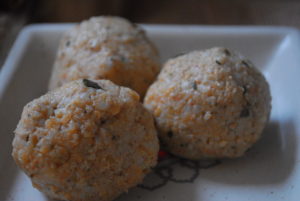
Around this time of year when families are looking to simplify their diet by eating that which is light on the stomach,the sola sappadu is a wonderful lunch time option. While rice in it’s many varieties is a staple in our home,millets make for an equally satisfying alternative.Slaving over a hot stove in the summer months is not enjoyable in the least. So quick , healthy meals like the sola sadham make meal times enjoyable for the cook as well. The texture and taste of this wholesome millet is what turns this simple dish into a regional delicacy.
Funnily enough,I have never made the sola sadham at home.It has always been sent to me by my mother or grandmother or from the home of a dear friend who is happy to share with me the kai vanam (hand made with love) of her own grandmother’s kitchen.
The process of making the sola sappadu requires coarsely crushing the grains which will speed up the cooking process. Back in the day the women of the house would sit on the cool mud or polished cement floor,feet outstretched going about their chores by hand.With no modern electrical gadgets to aid their culinary techniques, the time spent , grinding , winnowing the husk and cooking would be spent in exchanging banter, grumbling about their menfolk and any other juicy local gossip. This was multi-tasking at it’s best.
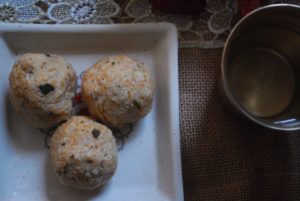
Once done with cooking the solam ,it would then be flavoured with finely chopped small onions, chilli powder, salt and herbs of choice, mostly curry leaves.When still warm ,the cooked solam will be made into palm sized balls and left to cool in a vessel. These will be served to the family with various accompaniments of choice. This was how I was taught to eat it.Depending on the weather or individual preference , this sola sappadu tastes great with a tangy morru kozhambhu* , a puli kozhambhu* made with the seasonal drumstick , a simple kadanja keerai* or (for those die hard non-vegetarians) a mutton kolambu. The taste of the sola sappadu differs from one home to the next. With eye-hand measurements used in the cooking process,this dish is endearingly unique.
We ate it a few days ago with a home grown vendaikkai morru kolambu (ladysfinger in a buttermilk gravy). Accompanied by some crunchy vadagams* and delicious garlic pickle,it was the perfect meal.
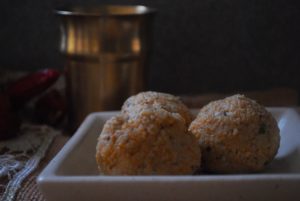
There are simpler ways of making the sola sappadu today like using the mixer to break down the grains and the pressure cooker to hasten the coking process.Thankfully these modern methods do not spoil the taste of this dish.In fact it’s heartening to see people in the urban environment striving to bring back these grains into their diet in a planned ,regular manner.
Solam is known as ‘jowhar’ in hindi and ‘sorghum’ in English. It’s eaten in the form of roti , dosai and even made into flour. We grow many varieties of sorghum as fodder for our livestock. But only one variety is termed as edible for humans (sorghum bicolor). This millet belongs to the family of grasses and is extremely drough resistant. It grows rather tall and ends with a conical tip where lie the clusters of solam. It grows in most tropical and sub-tropical areas. Hence,farmers planted millets during periods of less rainfall as a win-win situation.
While it has been a part of the Indian diet for centuries, sorghum is now being recognized in other parts of the world as a primary ingredient, especially for those with gluten allergies. Bread, pancakes, cakes etc made with sorghum flour is beginning to get noticed.
The health benefits of this pearly bead like grain are immense.It contains a multitude of vitamins, minerals, antioxidants which boost digestive health ,fight diseases and improve the body’s metabolism.The benefits are too many to include but I would recommend educating yourselves on the various advantages.
While it is important to include such foods in our diet, there must be a balance. Too much of anything leads to adverse reactions in the body. Enjoy just the right helping of sola sappadu and take plenty of pride in the vastness of our native cuisine.
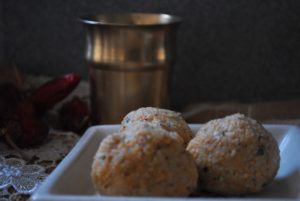
Translation of the vernacular names to English *
kolambu – a gravy dish of south Indian origin
puli kolambu- a tamarind based gravy
morru kolambu- a buttermilk based gravy
vadagam – sun dried and fried crisps made from rice starch etc
kadanja keerai- cooked spinach ,hand ground

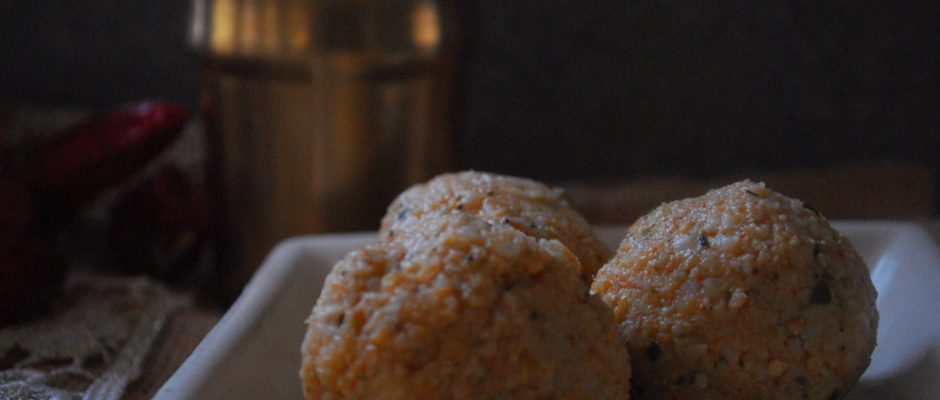
No comments yet.